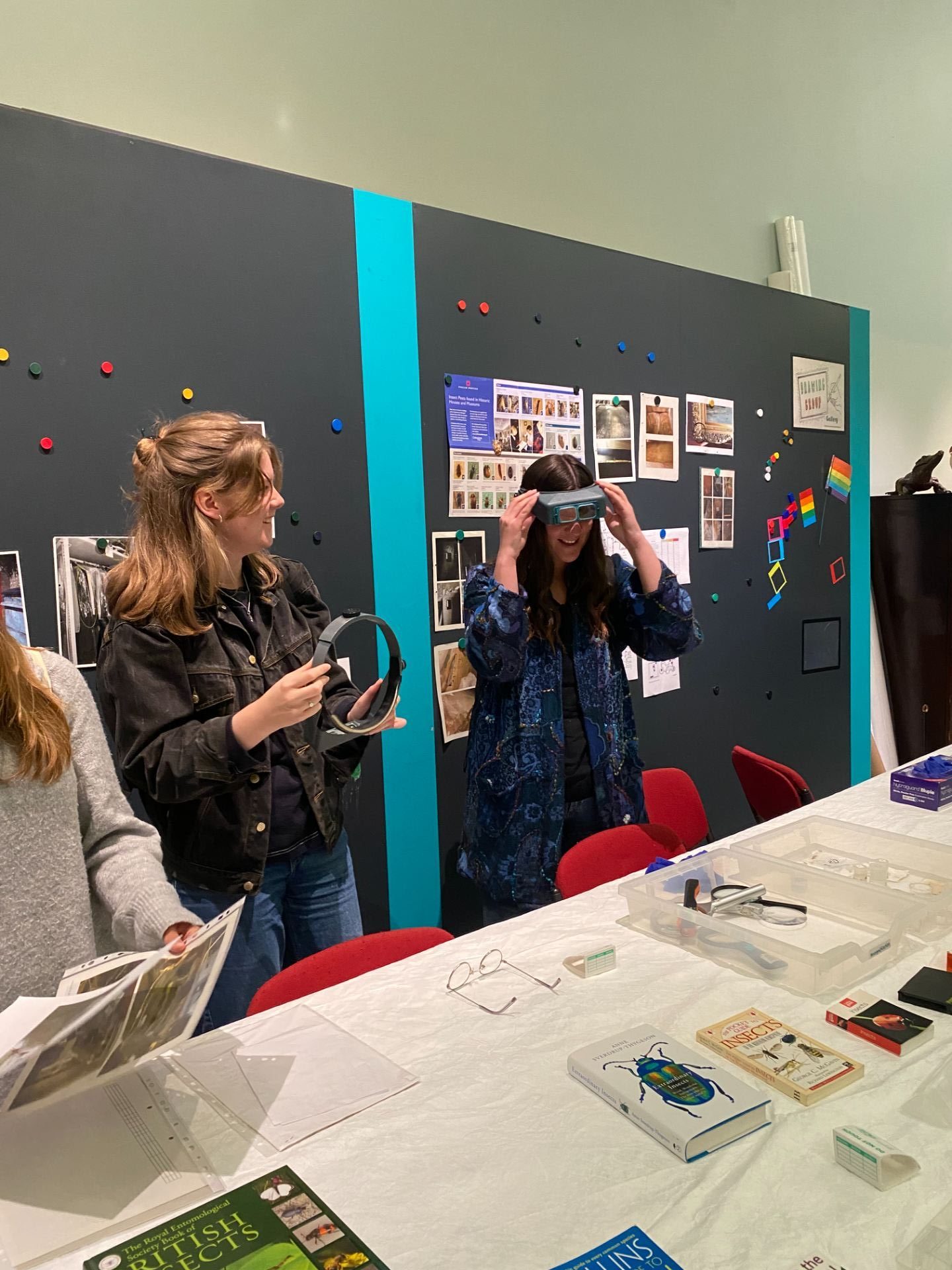MA Curating Collections and Heritage student Lola-May Baldock reports on study visits to the Brighton Museum and Art Gallery’s Museum Lab
As part of our second semester module ‘Caring for Collections and their Users’, we were lucky enough to have the opportunity to partake in two workshops at the Brighton Museum and Art Gallery. Both workshops provided us with invaluable sectoral skills that are important to carry into any job role within the gallery, museum and heritage sector.
 On the morning of Tuesday 3 May, we had a practical session on Integrated Pest Management with Gaye at the Brighton Museum Lab. Starting with an informal presentation delivered by Gaye on identifying pest types, how to trap them and preventative measures, the second half of the session consisted of practical collections care. We learnt about the handling and process of moving objects, artefacts and works of art. The session finished with a demonstration of how to pack objects for moving. Acid-free paper was used to create packaging called ‘puffs’ that would help safely transport a fragile taxidermy pheasant.
On the morning of Tuesday 3 May, we had a practical session on Integrated Pest Management with Gaye at the Brighton Museum Lab. Starting with an informal presentation delivered by Gaye on identifying pest types, how to trap them and preventative measures, the second half of the session consisted of practical collections care. We learnt about the handling and process of moving objects, artefacts and works of art. The session finished with a demonstration of how to pack objects for moving. Acid-free paper was used to create packaging called ‘puffs’ that would help safely transport a fragile taxidermy pheasant.
 Our second visit to the museum lab, on the morning of 17 May was a session on disaster and risk planning. The first half consisted of a presentation on types of risk within a museum or heritage environment. We learnt about the importance of a disaster plan and what it should entail. The session included a few group tasks such as a discussion on what we would do in a crisis. The second task was a constructed situation in which we would also use the information given to handle a certain minor incident. Lastly, in groups, we got to handle ‘water damaged’ objects and delicately salvage the items using relevant techniques to dry them.
Our second visit to the museum lab, on the morning of 17 May was a session on disaster and risk planning. The first half consisted of a presentation on types of risk within a museum or heritage environment. We learnt about the importance of a disaster plan and what it should entail. The session included a few group tasks such as a discussion on what we would do in a crisis. The second task was a constructed situation in which we would also use the information given to handle a certain minor incident. Lastly, in groups, we got to handle ‘water damaged’ objects and delicately salvage the items using relevant techniques to dry them.
The first session taught me how to identify pest infestation. It helped me develop an understanding and awareness of how pests affect artefacts and learn about signs of infestations to look out for. This also helped me to build upon my observation skills. By extension, problem solving was necessary to help create solutions to prevent further damage caused by pest infestation. In both workshops, we had the opportunity to work in small groups and use our new skills to brainstorm how we would plan around a crisis scenario. In any role within the museum, gallery, archive or the heritage sector, being able to communicate effectively with colleagues is imperative. Both sessions really helped solidify the academic readings and seminars that we had undertaken throughout the semester, especially when thinking about the importance of preservation of collections in the event of disaster and risk to artefacts within the museum and heritage environment.
For more information about the course, please visit: Curating Collections and Heritage MA (brighton.ac.uk)
